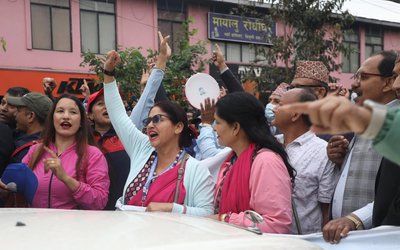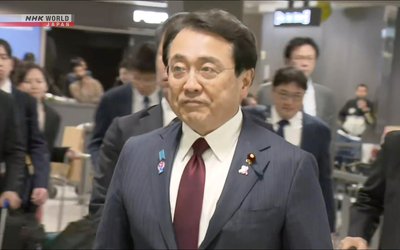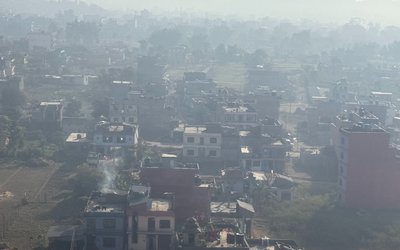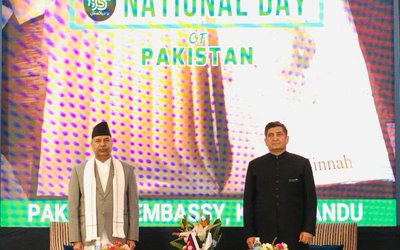In the realm of global commitments to gender equality, numerous legally binding instruments exist, aiming to dismantle the structural barriers that perpetuate gender disparities. International frameworks like the Convention on the Elimination of All Forms of Discrimination Against Women (CEDAW) and the Beijing Platform for Action offer comprehensive roadmaps for progress. Yet, despite these commitments, gender discrimination remains a persistent issue in Nepal. This small piece of article explores the myriad factors contributing to ongoing gender disparities and the critical intersection of gender with disaster risk reduction in a country frequently beset by natural calamities.
Since the establishment of CEDAW in 1979, Nepal has been urged to take concrete steps to eliminate discrimination against women. The subsequent initiatives, such as the Millennium Development Goals (MDG) and the Sustainable Development Goals (SDGs), emphasize the need for gender equality as a fundamental aspect of development. Nepal has ratified these international conventions, embedding commitments to gender equality in its constitution. However, the reality on the ground tells a different story.
The challenges are deeply rooted in the fabric of society. Traditional norms and values, coupled with political and economic constraints, create an environment where gender discrimination flourishes. Women’s roles are often relegated to the domestic sphere, while men dominate public and economic life. This cultural context not only limits women's opportunities but also affects their decision-making power across various sectors.
Fundamental Issues Affecting Gender Equality in Poor Communities
In examining the challenges faced by marginalized communities, several fundamental issues emerge:
Chronic Poverty and Its Effects: For many poor communities, chronic poverty becomes a way of life, leading to a normalization of inequality and social isolation. Individuals may struggle to articulate their aspirations due to entrenched economic restrictions, which further perpetuates their marginalization. Additionally, there can be reluctance to engage with gender rights services unless there is confidence in achieving tangible results.
Local Political Dynamics: Power dynamics at the local level are often dominated by small elite groups, whose influence can limit access to and practice of gender equality. While external feminist approaches may temporarily raise awareness of gender issues, they often fail to restructure the underlying disparities in power and resources.
Educational Access: Inequities in rural areas are frequently exacerbated by a lack of access to education and supportive infrastructure. This educational isolation hinders the development of skills and knowledge essential for empowerment and social mobility.
Policy Frameworks: The success of initiatives aimed at balancing power dynamics is heavily influenced by the broader policy environment. If policies are biased against women or do not consider their specific needs, any intervention is likely to have a limited impact on achieving true gender equality.
One of the most significant factors contributing to gender inequality in Nepal is access to quality education. Girls, particularly from low-income rural families, face substantial barriers to education. Despite government initiatives aimed at increasing female enrolment in schools, many girls still lack access to quality education. This educational disparity has long-term implications, as girls who do not receive adequate schooling struggle to compete with their male counterparts, who often benefit from better educational resources in urban centres.
Moreover, even women who do attain positions of influence often encounter systemic barriers that undermine their authority. Male-dominated societal structures can pressure women into conforming to traditional roles, stifling their potential. It is not enough for women to occupy leadership positions; they must also be empowered to lead with confidence and assertiveness.
The intersection of gender and disaster risk is a pressing concern in Nepal, a country that is no stranger to natural disasters. Research conducted by the Asian Development Bank in 2008 revealed alarming statistics: during disasters, women are disproportionately affected. For instance, women constituted 61% of deaths during Cyclone Nargis in Myanmar in 2008 and 55% of casualties during the 2015 Gorkha earthquake in Nepal. These figures underscore the urgent need for gender-sensitive disaster preparedness and response strategies.
Natural disasters exacerbate existing gender inequalities, as they often disrupt the social fabric and economic stability of communities. Women and girls face increased vulnerability during and after such events, facing heightened risks of gender-based violence and limited access to essential services. The concept of "shadow disasters," referring to the invisible crises of gender-based violence that emerge in the wake of disasters, is a critical area of concern. Reports of domestic violence and exploitation tend to rise during such crises, revealing the often-overlooked impacts of disasters on women.
Recognizing the disproportionate impacts of disasters on women, various development partners in Nepal have begun to implement gender-sensitive disaster risk reduction strategies. Initiatives such as Gender in Emergencies (GiE), safe programming in humanitarian response, gender and DRR approaches, and the Local Government Institutional Capacity Self-Assessment (LISA) aims to gauge enhanced local capacities in addressing gender disparities during disaster planning and response.
Gender-sensitive budgeting has also emerged as a crucial tool, ensuring that resources are allocated to address the specific needs of women and girls in disaster scenarios. Additionally, the Feminist Local Humanitarian Leadership (FLHL) initiative promotes an intersectional feminist approach, encouraging local leadership that prioritizes the unique challenges faced by marginalized groups during disasters.
Establishing and enhancing the capacities of Women Empowerment Centres (WECs) presents a significant opportunity to access and exercise their DRR and humanitarian rights, and power towards gender equality. These centres should not only aim to meet short-term organizational or project-specific goals but should also contribute to a broader societal purpose. By empowering women to exercise their rights and engage in decision-making processes, WECs can play a vital role in transforming communities and promoting a more inclusive society. Investing in the long-term development of these centres will help create sustainable changes that benefit everyone, ultimately leading to a more equitable and empowered society.
Despite these efforts, the journey toward true gender equality remains fraught with challenges. Progress has been inconsistent, and the outcomes of these initiatives are often partial. While there are success stories and best practices, the overall impact on gender equality, particularly concerning women and girls, remains limited.
Addressing Root Causes: A Holistic Approach
To effectively combat gender discrimination in Nepal, it is essential to address the root causes of inequality. This requires a multifaceted approach that encompasses education, economic empowerment, and cultural transformation. Education must be prioritized not only as a means of individual advancement but also as a societal imperative. By investing in girls' education and promoting gender-sensitive curricula, we can advance a generation of empowered women who can challenge existing norms.
Economic empowerment is equally vital. Women must be given access to resources, training, and opportunities that enable them to participate fully in the economy. This includes promoting female entrepreneurship and ensuring that women have a voice in economic decision-making processes.
Cultural attitudes toward gender roles must also evolve. Engaging men and boys as allies in the fight for gender equality is crucial. Programs that promote positive masculinity and challenge harmful stereotypes can help create a more equitable society.
Strong political will and effective DRR and humanitarian policies at locals are essential for driving change. The government of Nepal must prioritize gender equality in its development agenda and hold itself accountable to international commitments. Advocacy from civil society organizations, grassroots movements, and community leaders can amplify the voices of marginalized groups, ensuring their needs are addressed in policy formulation.
Moreover, building partnerships between government entities, NGOs, and international organizations can enhance the effectiveness of gender responsive DRR programs. Collaborative efforts that bring together diverse stakeholders can create synergies that drive progress toward gender equality.
Conclusion: A Call to Action
The journey toward gender equality in Nepal is ongoing, fraught with challenges but also filled with opportunities for change. The existing legal frameworks (DRRM Act and Policy, Local Government Operation Act, the DRR National Strategic Action Plan) provide a strong foundation, but their implementation and the cultural shifts required for real progress are still lacking.
It is imperative for all stakeholders (governments, NGOs, CDMCs, and individuals) to come together to break the barriers of gender discrimination. By prioritizing education, creating and establishing economic stability, and promoting cultural transformation, we can pave the way for a future where gender equality is not just a commitment on paper but a lived reality for all women and girls in Nepal.
As we reflect on the myriad of global and national efforts to combat gender disparities, we must recognize that the fight is far from over. It requires unwavering dedication, innovative approaches, and a collective will to transform society for the better. Only then can we hope to create a more equitable future where every individual, regardless of gender, can thrive and contribute to the nation’s development and also to ensure that women and girls and gender non-binary people enjoy their human rights.
Bimal Khatiwada is Oxfam's Technical Coordinator for Disaster Risk Reduction and Resilience in Nepal.
- National Anticipatory Action Framework And Roadmap In Nepal: A Long-Awaited Leap In Nepal’s Disaster Risk Management
- Apr 15, 2025
- Localization: A Path To Socio-Economic Transformation In The Globalized World
- Mar 24, 2025
- Political Dimensions Of Localization In Humanitarian Discourse: Humanitarian Actions At Local By Regional Agencies
- Feb 11, 2025
- Sustainability In Development Projects: An Appraisal Of Nepal's Development Landscape
- Jan 19, 2025
- Saga of the Justice Reality: Work from Home with Remote Allowance
- Dec 05, 2024
















